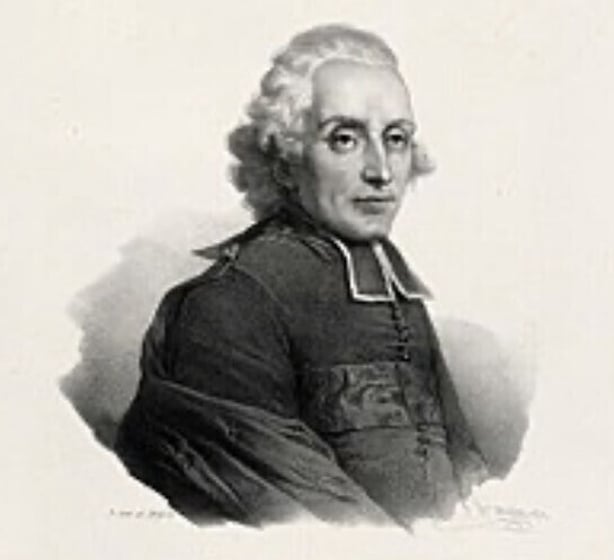This is the surviving eye-witness testimony of Henry Essex Edgeworth who was on the scaffold in the Place de la Concorde with Louis XVI, as the French king faced the guillotine. On that day, January 21st 1793, the king was 38 years old and Henry, was ten years his senior. A relative of the celebrated novelist Maria Edgeworth, he was born in Edgeworthstown Co. Longford in 1745. As a young man, he was educated by the Jesuits and trained for the priesthood in Toulouse in southern France. There, he met a fellow seminarian, the Cork-born Francis Moylan. After his ordination, Edgeworth became the Vicar-General of the Diocese of Paris and the confessor to the King's sister, Elizabeth in 1791.
We know all of this because Edgeworth’s correspondence to Moylan survives and was published as a collection by a Franciscan priest, Fr Thomas R. England. The letters are an intimate portrait on the mounting tension and crisis in revolutionary France. The Catholic Church was an integral part of the French state and was criticised and denounced in the political writings and public speeches of revolutionary leaders.
Edgeworth describes pivotal moments in the Catholic clergy's fatalistic relationship with the National Assembly. This involved the compulsory selling of Church property, the abolition of monastic vows and finally saw the introduction of the Civil Constitution of the Clergy, requiring an oath of loyalty to the newly instated Civil Constitution and the Revolutionary Government.
The collection also reveals the anguished story of how an Irish priest was requested by the Executive Council to attend the last moments of the king. The letter, dated London September 1st 1796, explains how Edgeworth stayed with the king overnight in Temple prison, administered the last rites to him and said mass. The priest rode with the king as he was paraded through the Parisian streets. He witnessed the King's hair being cut and the final blow of the blade as it sliced through the back of the King’s skull, cutting through his jaw and severing his head. Splattered with the king’s blood, Edgeworth stared down at the mob and, fearing he was next, slipped off the scaffold and escaped into the crowd.
As Edgeworth moved tentatively, through the colossal crowd, two fellow Irishmen were watching the proceedings. The most enduring account of the guillotine on that fateful day concerns a set of Cork-born brothers, Henry and John Sheares. Synonymous with the United Irishmen movement in Cork, the Sheares brothers' drew inspiration from the ideals of the French Revolution and the social change it promised.
Though they were later convicted of treason and executed for their part in 1798 Rebellion, it is a widely held belief that the Sheares brothers were present at the execution of the Louis XVI and that they convinced a member of the crowd closest the scaffold to dip a handkerchief in the blood of the king. Onboard a ship back to England, the brothers produced their souvenir to thrill travelling companions. Revulsed at the sight, fellow passenger, a teenaged Daniel O'Connell, is said to have turned away from both the sight of the blood-stained hankie and the use of violence as an agent of change.
Edgeworth stayed on the run for a number of years, careful not to leave France in case he was discovered. His friend Moylan tried to convince the priest, referred to only as the Abbé De Firmont, to return home to Ireland, but Edgeworth protested that he was too old at the age of nearly 50. He had spent the majority of his life in France and was now unfamiliar with Irish customs and had very poor English. (Read more.)
From Canada Free Press:
Basically, the mob violence in France in the late 1700s and in the streets of U.S. cities in in 2020 is similar. Merciless, and often senseless, mob violence usually shows similar characteristics. Mob violence and rioting can easily spin out of control and rioters can pursue destruction with great zeal to harm anything or anyone in the way, much like unleashed wild animals ravaging anything in their path. Mob justice allows no respect for law and order. In Paris, on July 14, 1789, an agitated mob acted in similar ways to anarchists and Antifa and BLM terrorist mobs in 2020. Leadership behind both of these two examples of mob terror played a key role in mobilizing and channeling the mob activity. (Read more.)Share


















No comments:
Post a Comment